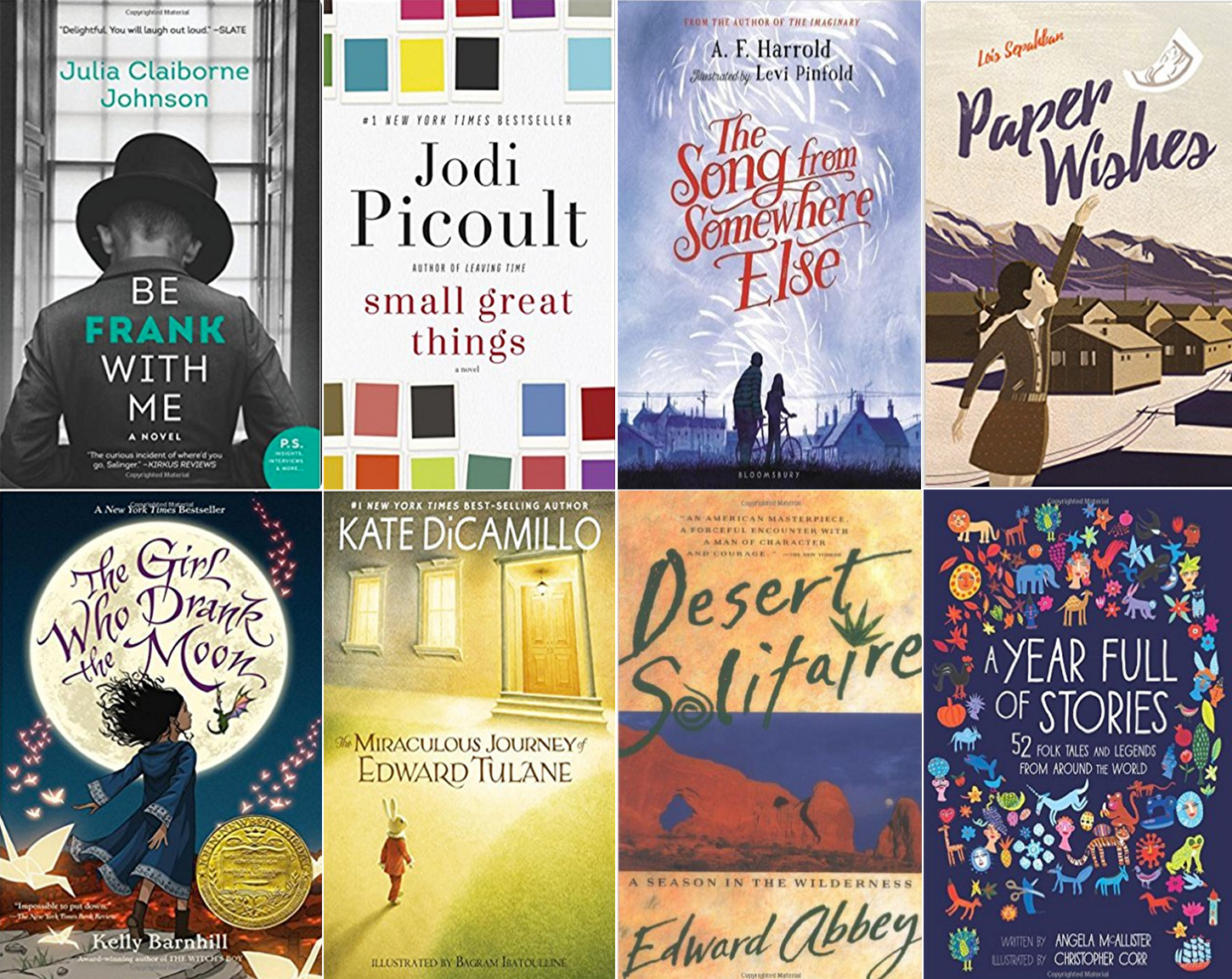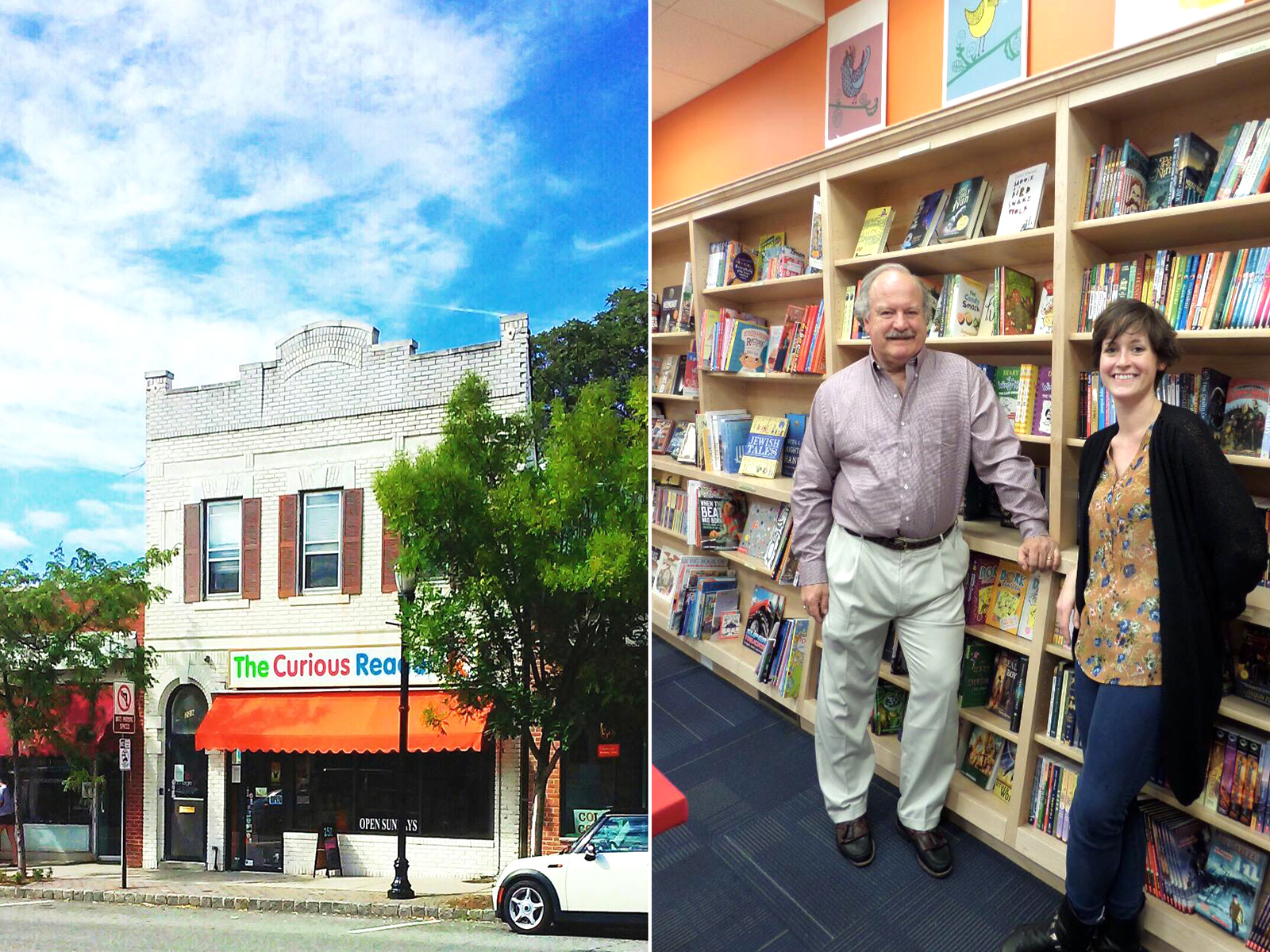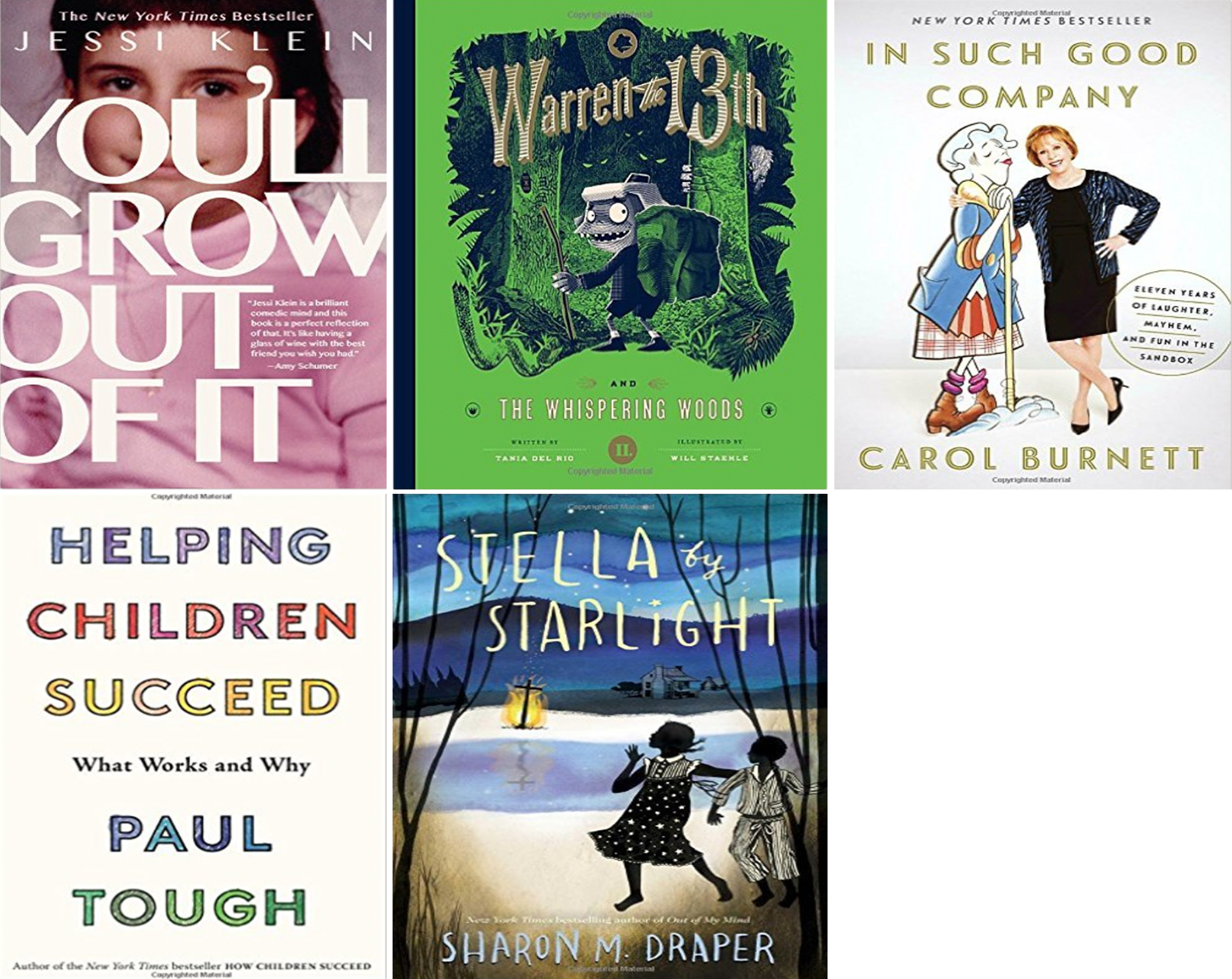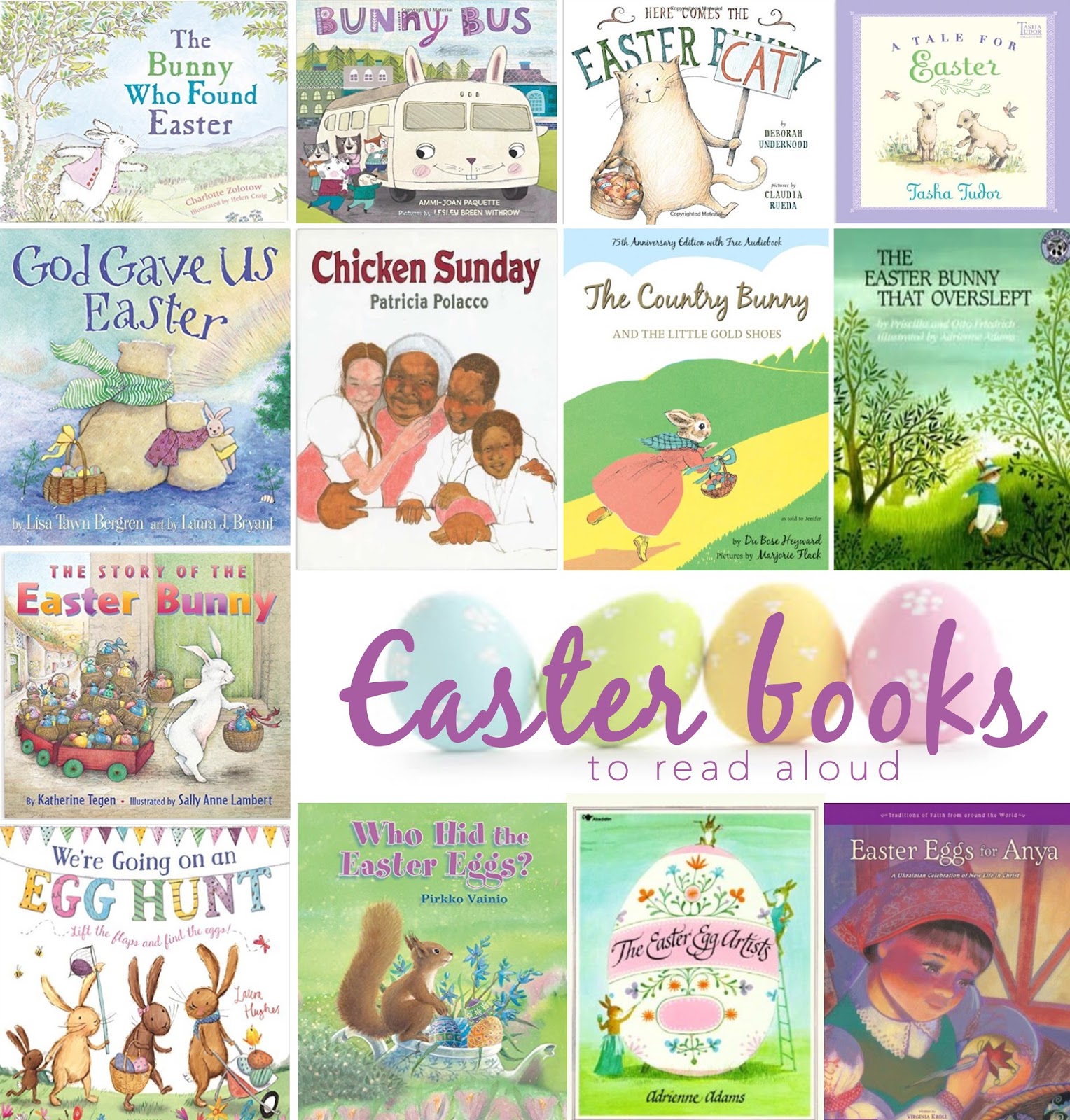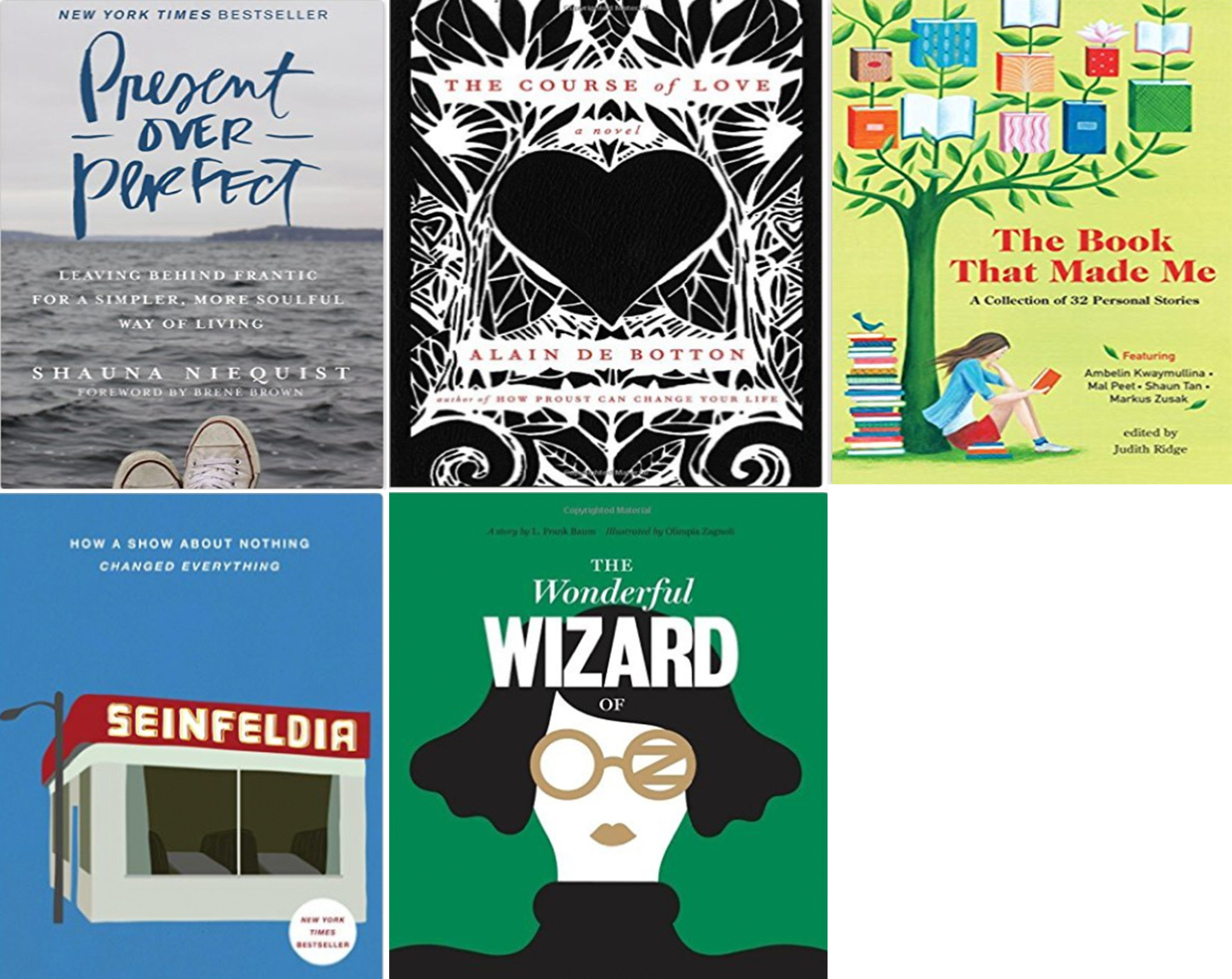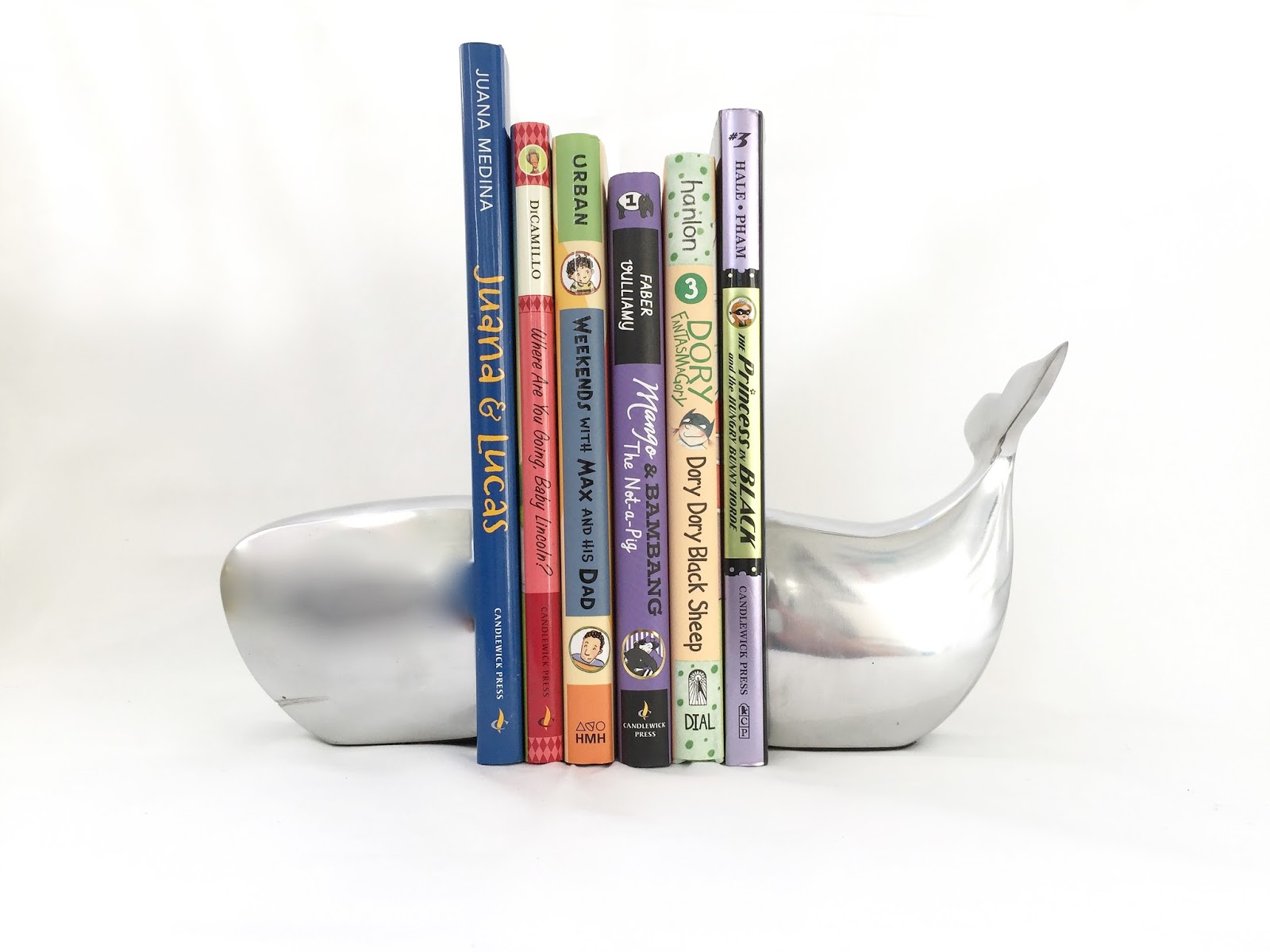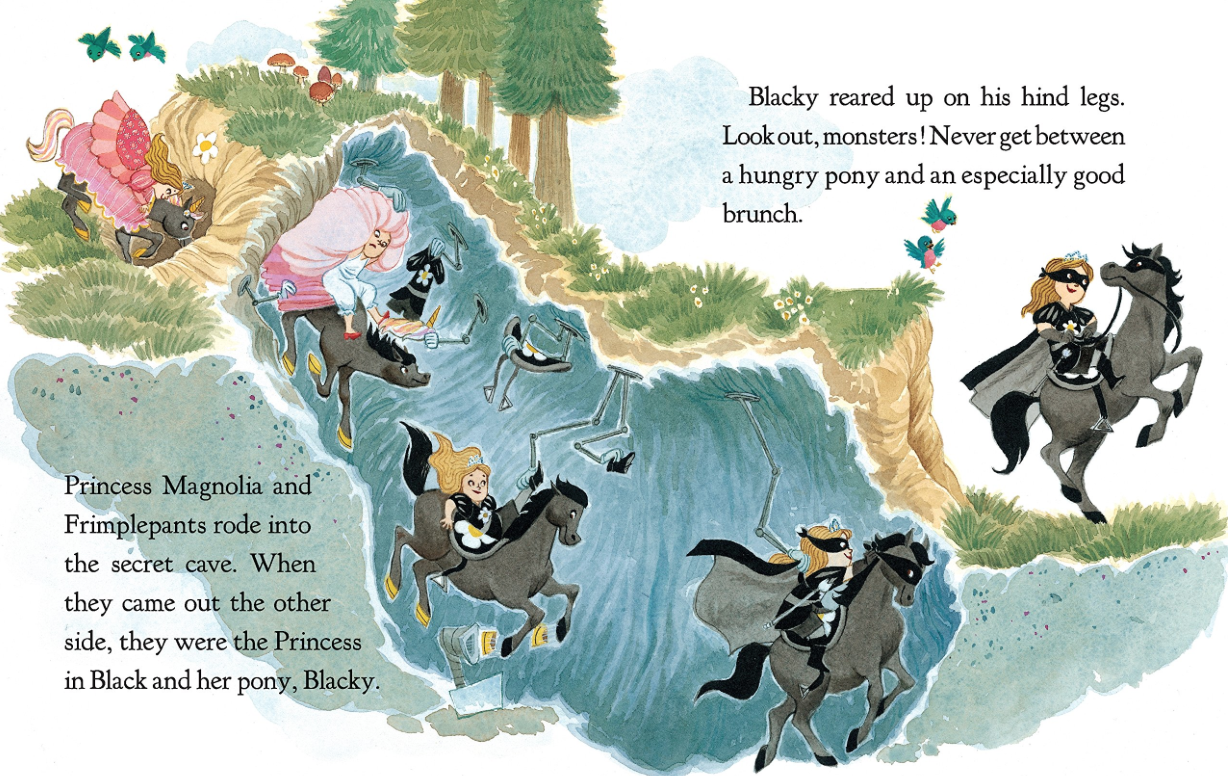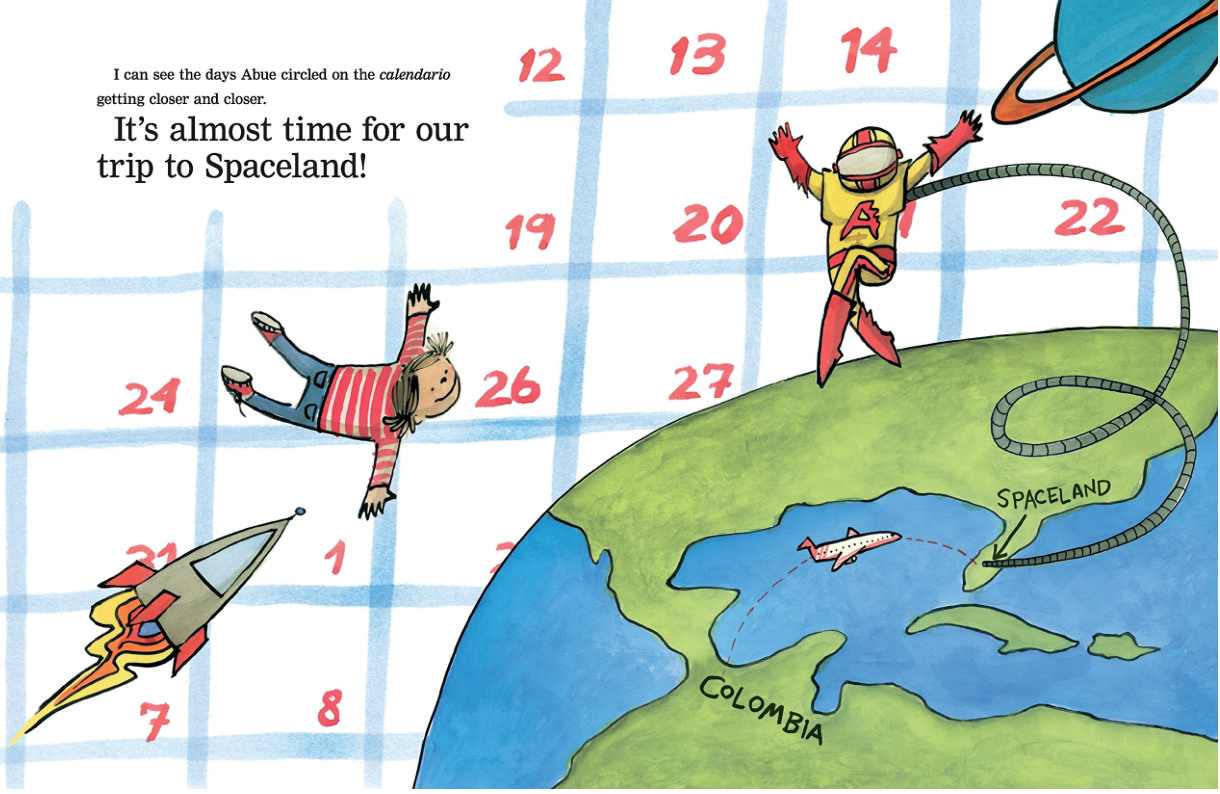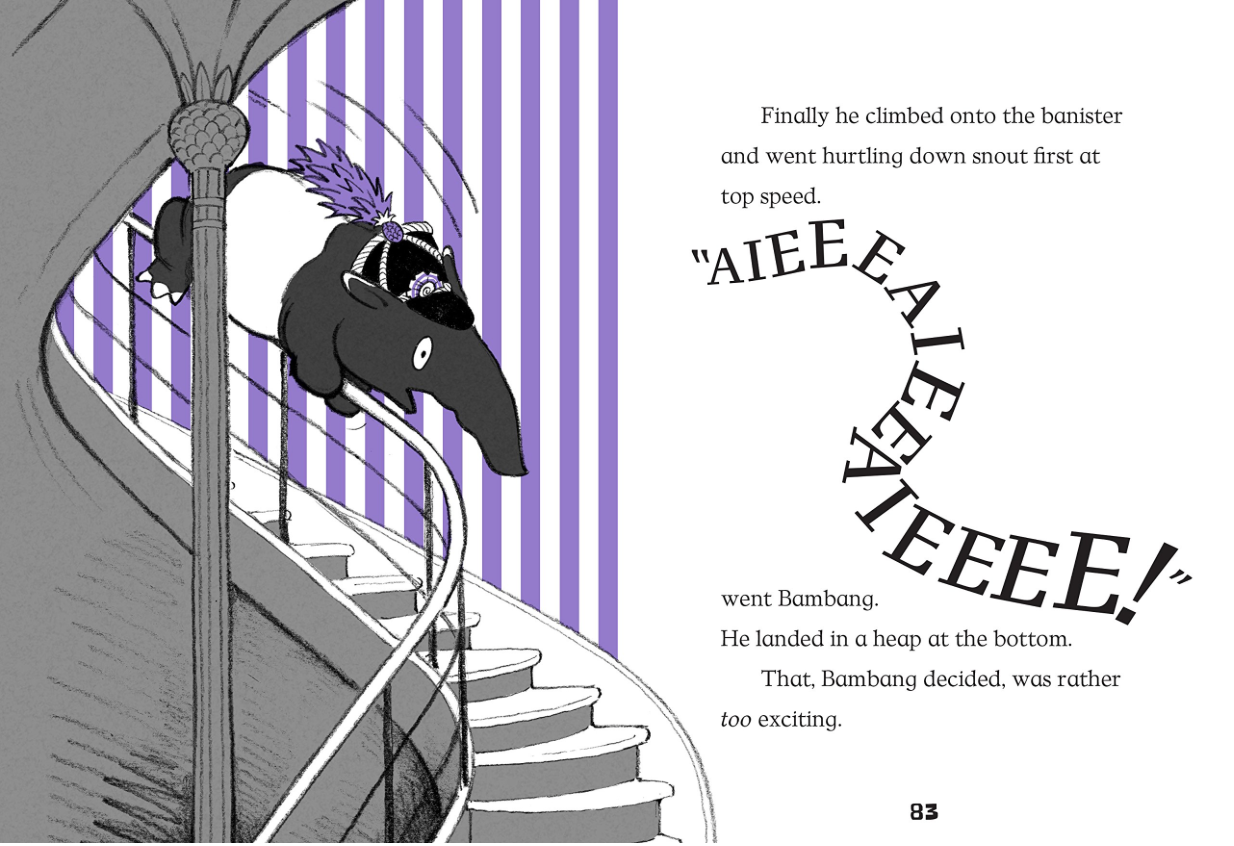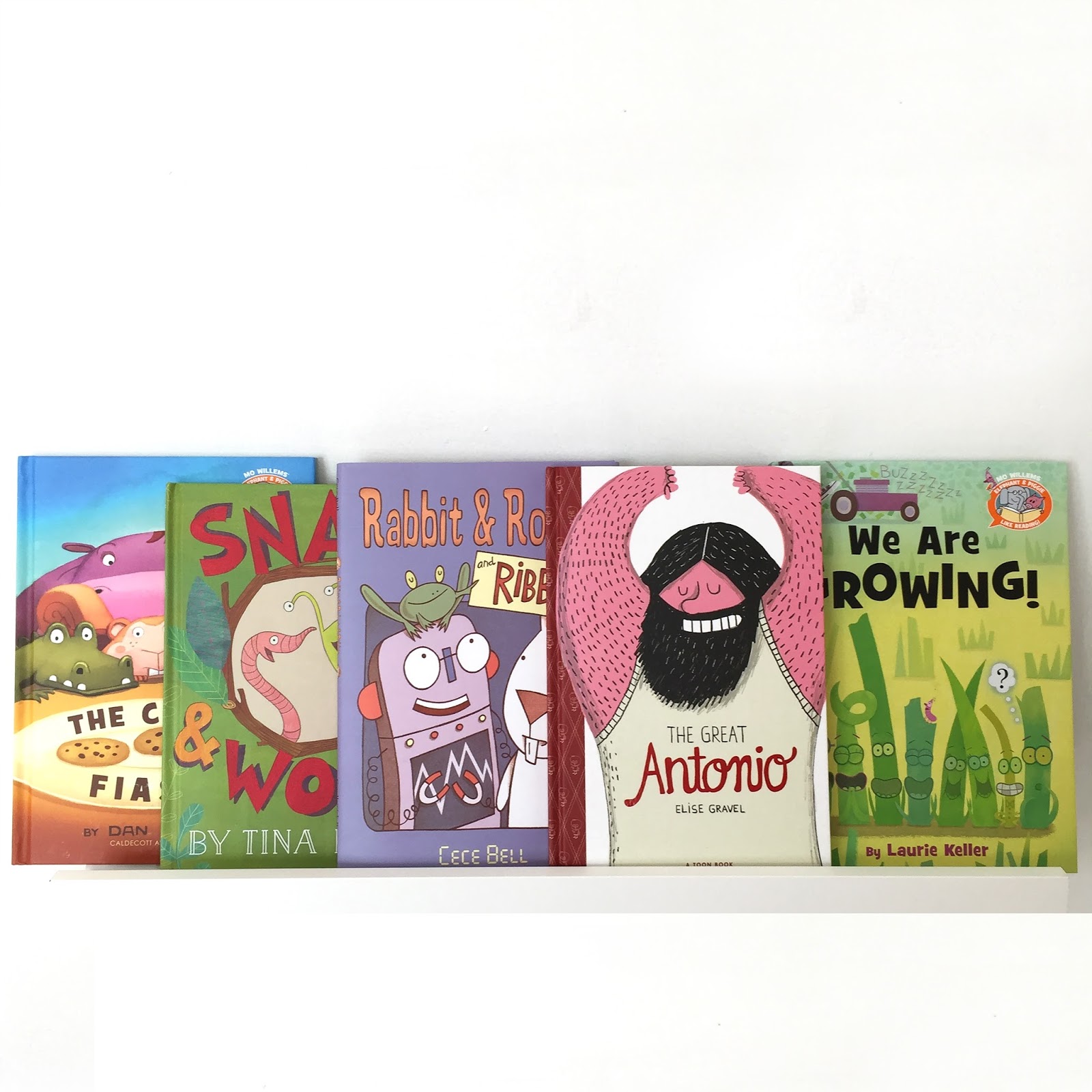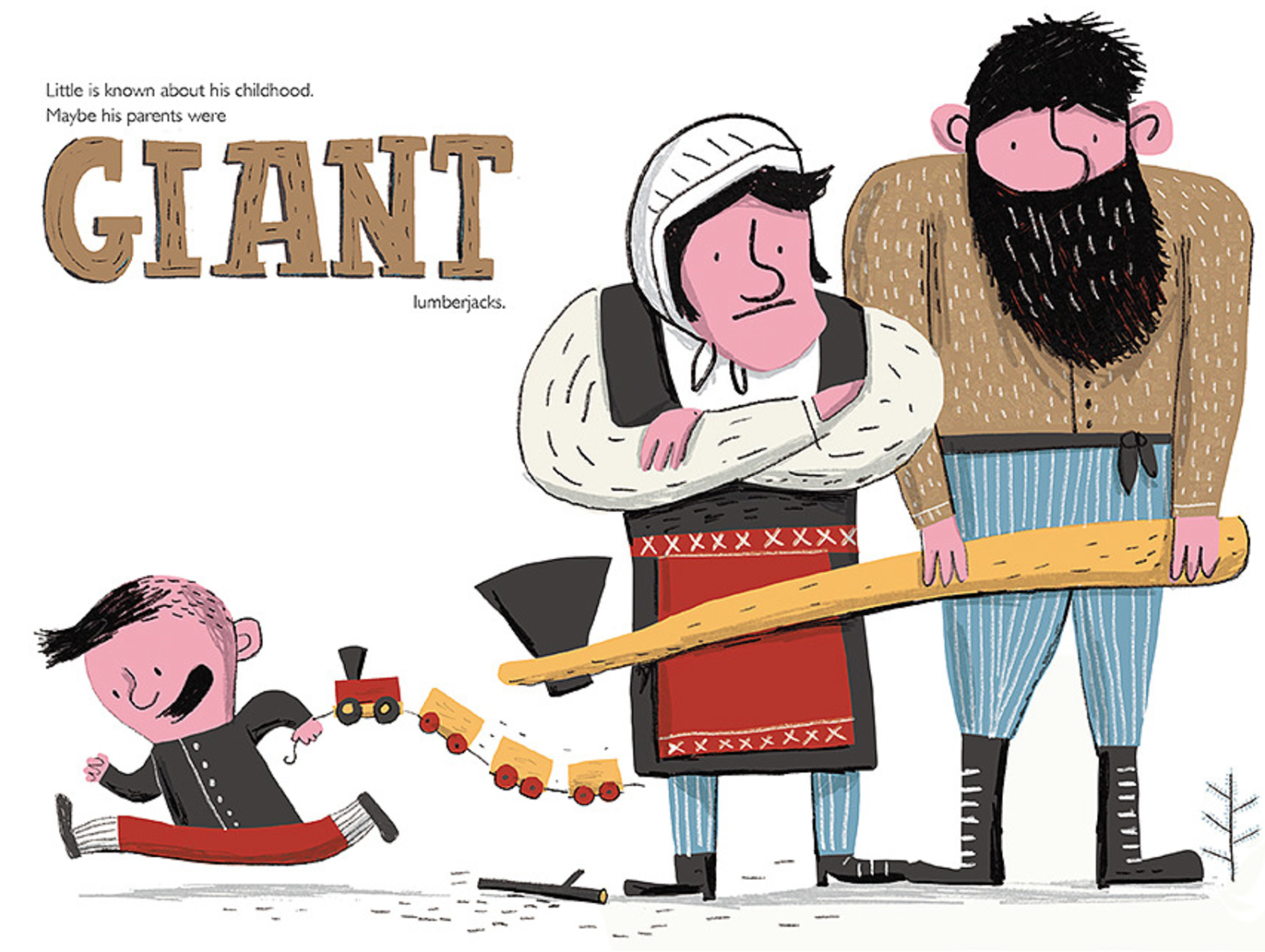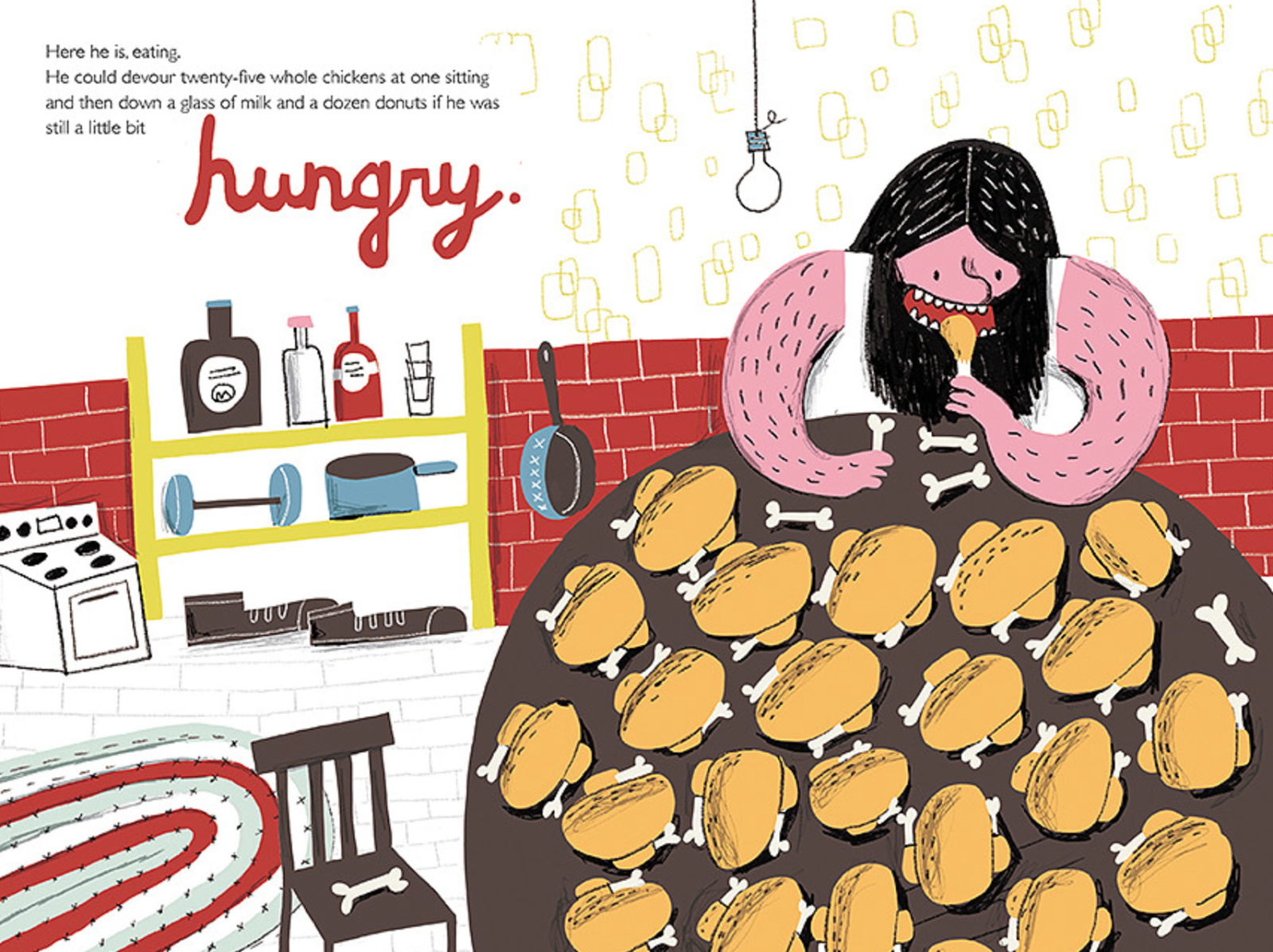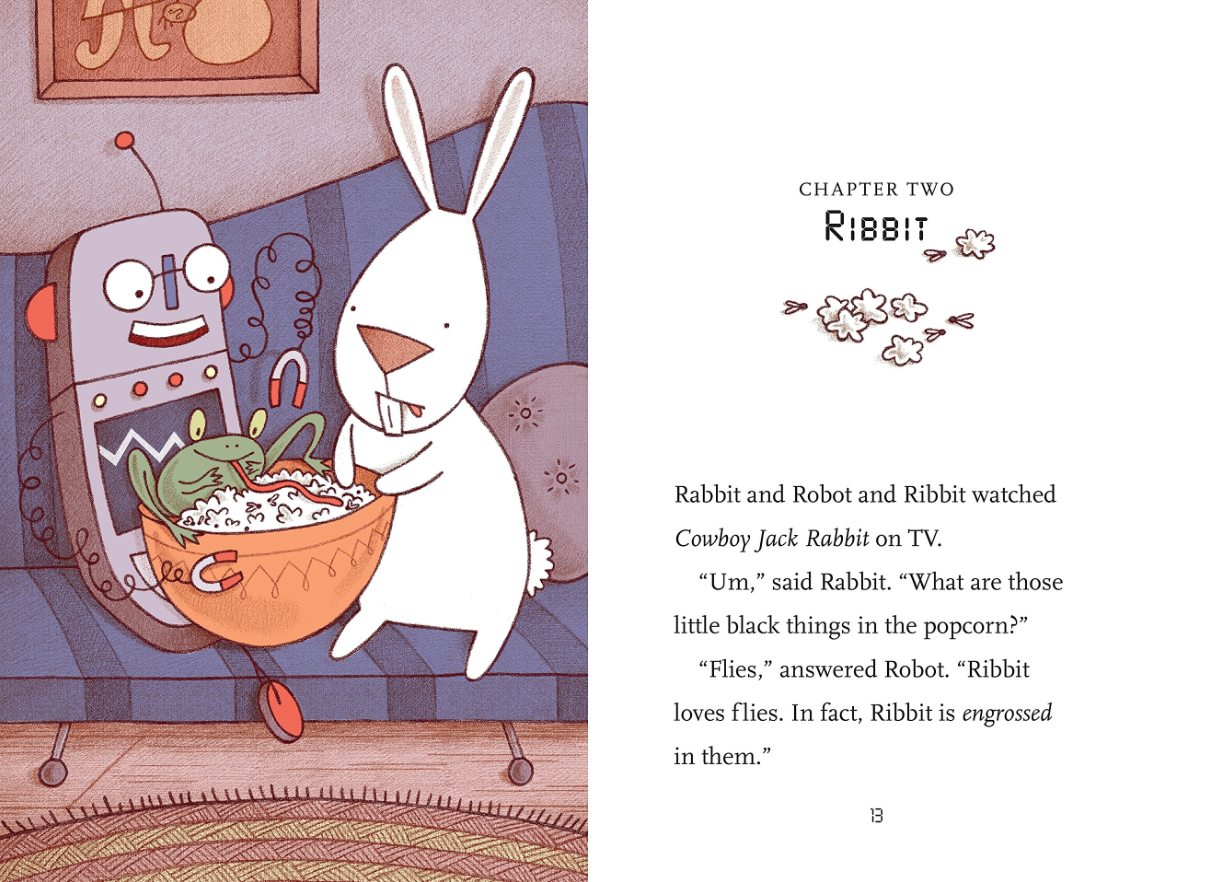A Happy Announcement
Tuesday, July 18, 2017
Back in March I was pretty sure that I was pregnant, but a home pregnancy test indicated a negative response. One week later and a different pregnancy test indicated a positive result. Yesterday was my 20 week appointment and after some prodding we discovered that yes indeed we'll be adding another girl to our family. This November to be precise. Hooray!
My hope is that Little P, as we've taken to calling her, will arrive early and not 10 days late like her sister. But I suppose these things can't really be planned, or can they? My other hope, apart from a healthy baby of course, is that we will be able to transition to a family of four with patience, time and a lot of grace. Meanwhile, to celebrate this happy news, we're going crazy with a week of giveaways over on Instagram. Feel free to follow along and share any tips you may have about how on earth to manage more than one child.
What I Read: April & May
Wednesday, May 31, 2017
As we head into summer I'm looking at my goal for 2017 (to read 60 books) and feeling a little daunted. Can I make it? Does anyone else polarize between having a pile of books you want to read nonstop and then feeling kind of meh about reading in general? Summer can be tricky for reading, especially when downtime (aka child-free moments) are scarce.
Luckily I never stray far from my reading roots. Do you have any tips for getting out of a reading slump? Meanwhile, here is what has been occupying my days (and nights) the last couple months. Feel free to leave any must-read recommendations in the comments.
Luckily I never stray far from my reading roots. Do you have any tips for getting out of a reading slump? Meanwhile, here is what has been occupying my days (and nights) the last couple months. Feel free to leave any must-read recommendations in the comments.
- Paper Wishes - This debut middle-grade novel is set during WWII, where a young girl and her family are sent to a Japanese internment camp during one of the darker periods in American history. In the relocation she is separated from her beloved dog and subsequently copes by developing a sort of selective mutism in the camp. I especially appreciated the moments of hope scattered throughout this book.
- The Song from Somewhere Else - Clearly I'm on a middle-grade kick, and although I don't read every ARC publishers send me, this one felt like a twist on a story that would resonate with pre-adolescent kids. I'll admit that parts of the story confused me and definitely required a willing suspension of disbelief. But overall I liked the friendship Nick and Frank developed and thought maybe more stories should involve non-romantic relationships between a boy and girl.
- Small Great Things - My first Picoult novel and one that engrossed me from the start. Chapters alternate between the three main characters, unraveling a story of race and hate, grief and resolution. Talk about a range of emotions and an awakening to my own privilege. No doubt this would spark a fascinating book club discussion.
- Desert Solitaire - A book that was frequently referenced during my undergraduate days at Utah State University I finally managed to read thanks to a recent girls' trip to Southern Utah. Not only is Abbey one of the great writers of our time, his prose is both accurate and intoxicating in describing the dessert landscape of such a lonely and lovely part of the country.
- The Girl Who Drank the Moon - The acclaimed Newbery winner obviously needs no introduction, still I was surprised by how well the story and characters were woven together. This was certainly a genre outside my comfort zone, but it was so well done I had my husband read it as well.
- The Miraculous Journey of Edward Tulane - What a delight to return to this chapter book a decade since I purchased it in graduate school. It reminds me of a hero's journey meets The Velveteen Rabbit and is perfect for introducing toddlers and preschoolers to longer books.
- Be Frank With Me - Easily one of my favorite audiobooks to date. Thank you Hoopla for the recommendation. Mimi is a wealthy author, living in somewhat obscurity after her one-hit-wonder, when she takes on Alice Whitley as a live-in assistant, whose primary charge is Mimi's young, eccentric and on the spectrum son, Frank. Heartwarming is certainly an apt description for this enjoyable read.
- A Year Full of Stories: 52 classic stories from all around the world - (Still reading.) We started this book as a family at the beginning of the year and have kept it at our dining room table to read during dinner. It's a gorgeous collection of folktales and legends from around the world, each read on a day that coincides with a certain holiday or festival. Truly, a must for any home library.
Interview with Sally of The Curious Reader
Tuesday, April 4, 2017
Last summer we had the great privilege of stopping by The Curious Reader during an unforeseen travel incident. It was perhaps the best decision of our entire trip. When in doubt, go to the bookstore! Immediately I was taken with the vast selection of curated children's books - titles ranging from picture books to young adult novels and everything in-between. Add to that the charm of a motorized train circling the top of the store, weekly storytelling, author visits, and a cozy ambiance, I couldn't help wanting to stay there all day. Clearly, The Curious Reader has earned the rightful reputation of being a unique children's bookstore. One that every neighborhood should be so lucky to have.
Now here's co-owner, Sally, telling us a little more about the day-to-day operations of running The Curious Reader.
Can you tell us a little bit about your background and the process that led you to selling books full time?
When I was a senior in high school, I was diagnosed with depression and anxiety, which made college very difficult for me. I went to Wellesley College for a few semesters before taking a leave of absence (I never ended up going back). While I was at home, my parents insisted that I get a job, which I did, reluctantly. It was at a (now closed) children’s bookstore that I had loved as a kid, and it was unexpectedly life-changing. The first YA book I ever loved - The Disreputable History of Frankie Landau-Banks by E. Lockhart - made me realize that kids’ books could be just as intelligent and layered as books for grown-ups. I was hooked, and read all the literary YA I could get my hands on (I didn't discover the wonders of middle grade until Rebecca Stead's When You Reach Me).
As I grew to love children’s literature, my job became more than just a way to make my parents happy; I became more involved in the store and learned a lot about the business. The owners were very nurturing and seemed to enjoy educating me and I dreamed of running my own store someday. However, in my eighth year working in children’s books, they decided to close the store, and I was panicked. Could I ever find such a perfect job ever again? Luckily, my father had just retired from his CFO job and was a little bored (he was also driving my mother crazy at home). He’d always fantasized about owning a bookstore, and convinced me that together we should give it a go. The spring and summer of 2013 were spent imagining and creating The Curious Reader, and we officially opened our doors in October 2013.
What does a typical day look like for you?
There’s not a lot of consistency to my schedule - the day is usually spent trying to address whatever issues may arise. We’re open six days a week (closed Mondays), and during the week there are a few regular events that can be expected: the store opens at 10 am; UPS shipments arrive around noon (my favorite part of the day!); I try to take a picture for an Instagram post between 3 and 4 pm, and post it soon after; the store closes at 6 pm. In between, it’s a bunch of small tasks like making sure inventory is up to date, helping customers, working on frontlist orders, reading blogs.
How do you decide what books to stock in the store?
I have reps for most of the publishers that I order from, and I do frontlist (new titles) orders about three months ahead of time (right now, my reps are contacting me to do fall orders). First, I go through the catalog (which has been marked up in advance by my rep) and create a first draft of an order, which my rep will then review before we have our appointment. She (most of my reps are women) will then offer suggestions for titles I may have missed, or adult titles that may be of interest to my customers. A good rep is worth her weight in gold - in particular, my Penguin rep really understands my tastes and what sells well in my store and doesn’t push me to order titles I don’t need (there’s usually a lot of books that don’t make sense for us and having a rep who doesn’t push these on me is greatly appreciated). When I’m building the order initially, I choose titles based on a few criteria: authors whose work I’ve liked in the past; subject matter; cover (it really does matter!); the book’s imprint and/or editor; pre-publication buzz; the author’s home; and what the rep recommends.
Blogs are also crucial - School Library Journal’s blogs, in particular, are great - Betsy Bird of A Fuse #8 Production was the first kidlit blogger I ever loved - as well as Jules Danielson’s work at Seven Impossible Things Before Breakfast. I also try to keep up with industry reviews, particularly from Kirkus and Publishers Weekly (their tastes seem to match my own).
I always try to look into unfamiliar books recommended by my customers, and sometimes I’ll end up carrying them if they look right for the store.
There are also a few Instagram accounts that showcase reliably wonderful books, and I often find myself saving their posts to use for a future order. My favorites, in no particular order: @averyandaugustine, @picturethisbook, @bookbloom, @spikypenelope, @writesinla, @teeandpenguin, @hereweeread.
What books did you read as a child and what books do you tend to read as an adult?
When I was aged five to eight, we lived in England, and that's where I learned to love reading. Many car trips were spent with my nose in a book, oblivious to anything but the words in front of me. I read all the time - favorites were the great Roald Dahl, Enid Blyton's Famous Five series, horse books, Nancy Drew, The Once and Future King. I was not terribly discerning, which led to me reading things way before I was ready - yes, I could read Margaret Atwood or George Orwell in seventh grade, but I definitely should not have.
As an adult, I read a lot of books about kids books (particular favorites being Wild Things! Acts of Mischief in Children's Literature and A Family of Readers) and kids’ books themselves. I always feel guilty if I read too much that’s not for the store, which has led to the demise of Chris's and my Two Person Book Club. The last grown-up book I read was The Summer Book by Tove Jansson, which was absolutely beautiful.
What does it take to make a small book shop successful?
First and foremost, it's all about location. We're lucky to be in a well-educated, wealthy, and liberal area, where people are readers and the school systems are very strong. Our conscientious and supportive community can afford to shop with us and not at Amazon or other big-box stores (which can offer discounts but not knowledge and passion -- whoops, don't get me started on Amazon!). Being so close to NYC is also important; many publishers and authors are based in the city, making it easy for them to visit. In the store itself, shared vision and good communication is essential. Though there are only three of us at the store full time, miscommunication (or more often, lack of communication) can occur, so we've started meeting at least once a week.
Do you have any parting advice for aspiring bookstore owners?
Find the perfect location and do lots of research. Work at an indie bookstore, if possible.
Thank you so much, Sally, for taking the time to talk with us. If you ever find yourself in New York City, take the quick trip over to The Curious Reader or follow along on Instagram for daily doses of insightful reading recommendations.
What I Read: March
Monday, April 3, 2017
- You'll Grow Out of It - Memoirs have long fascinated me and a couple people recommended this book as a humorous read. Unfamiliar with the comedic talent of the author, I went into the book unprepared. However, Klein's candor and deadpan wit riveted me from beginning to end. For some reason the bathing chapter was particularly hilarious to me.
- Warren the 13th and the Whispering Woods - I so enjoyed the first book in this series and was happy to reconnect with familiar characters. Plus it's always fun when I can read and share the same book with my husband. Take away: Beware of mysterious general stores that provide complimentary dental service.
- In Such Good Company - This was my deliberate selection for Women's History Month. During my adolescence I was taken with the comedy of both Lucille Ball and Carol Burnett. Something about red heads, I suppose. This book is a genuine behind-the-scenes look at the 11 years of people, sets, and costumes that made the sketches of television history. Burnett is both winsome and gracious in her recounting.
- Stella by Starlight - Another middle grade novel that has the aspiring writer protagonist, Stella, becoming acquainted with the difficulties of race, segregation, and injustice in her small town community. A quick and enjoyable read. However, one that I felt had her being the heroine more than was actually realistic.
- Helping Children Succeed - This book did nothing for me. It felt pedantic and entirely replete with academic terminology loosely connected to real-life anecdotes. For a better parenting book, I highly recommend this one.
13 Easter Books We Love
Friday, March 17, 2017
Growing up, Easter was always my favorite holiday. Probably because I spent it with my big family (cousins, uncles, aunts, grandparents) in Southern Utah. We celebrated with a weekend of hiking and dutch oven cooking and topped it all off with an outdoor Easter egg hunt.
Every spring those memories resurface and I feel immense joy for the traditions of my formative years. For me, Easter signals a season of renewal and feels like the start of a new year, more than any frozen January day. As with other holidays, we celebrate with books. So if you are looking for a few books to tuck into little Easter baskets these are some of our favorites.
- The Bunny Who Found Easter by Charlotte Zolotow - A lonely little fellow is in search of Easter. He trudges through the seasons and at last finds a companion. Together, along with their abundant offspring, they herald the arrival of the previously elusive holiday. A sweet story about how family makes life more enjoyable.
- Bunny Bus by Ammi-Joan Paquette - Full disclosure: this book ranks lowest of this list. However, the bright endpapers (vibrant eggs) and energetic illustrations are a lot of fun. Maybe don't rush out to buy this, but rather track it down at your local library.
- Here Comes the Easter Cat by Deborah Underwood - You knew this was going to be on the list. Our affable narrator is back and full of inquisitive questions for our favorite cat. This time in an effort to convince Cat that the Easter Bunny has a really tough job and maybe Cat should help out. However, it seems a no-nap gig isn't what Cat really wants after all.
- A Tale for Easter by Tasha Tudor - The sweetest cherubic children grace Tasha Tudor books and this one is no exception. Plus I like that the story starts off with a cheeky acknowledgement that we never really know when Easter rolls around, but hot cross buns the Friday before and a new dress generally signal its imminent arrival.
- God Gave us Easter by Lisa Tawn Bergren - We have a couple of the other God Gave us books and while this one is on the longish side it's a nice way to explain some of the religious aspects of Easter to younger children.
- Chicken Sunday by Patricia Polacco - Of all the books on this list this one is my absolute favorite! When a group of young children decide to buy an Easter hat for their gramma, the one she's had her eye on, they must overcome having their good intentions misunderstood. Basically anything by Patricia Polacco and the stories she weaves from her own childhood, ranks high on my most beloved list.
- The Country Bunny and the Little Gold Shoes by DuBose Heyward - Generations of children have loved this book, although I only read it for the first time a couple years ago. Essentially the gruff male bunnies all laugh when a lady bunny says she will grow up to be the Easter Bunny. Not only does she grow up to have a large family, she prevails and becomes the kindest Easter Bunny there ever was. Apart from any lesson or moral the book offers, it's a highly imaginative story that children both young and old can appreciate. Be aware that it is on the longish side for a picture book.
- The Easter Bunny that Overslept by Priscilla & Otto Friedrich - This might be a little hard to locate, but it's worth the hunt. As the title suggests, the Easter Bunny is alarmed when he wakes up to discover that it's Mother's Day, not Easter. Undeterred, he tries to give away his eggs at the 4th of July Parade and then appears again at Halloween. With humor and endearing images this is also a personal favorite.
- The Story of the Easter Bunny by Katherine Tegen - An old couple works together to dye eggs, make baskets, and create chocolate bunnies. All while their pet rabbit watches on. Soon the couple becomes too old to spread Easter happiness to the neighborhood children and the young bunny takes over the holiday duties. A fresh take on how the Easter Bunny came to be.
- We're Going on an Egg Hunt by Laura Hughes - This lift-the-flap book is based on the old American folk tune and is beloved by the 2-4 year-old crowd. Count the eggs as you go and watch out for that sneaky wolf at the end. This is also a fun book to read before a child's first egg hunt.
- Who Hid the Easter Eggs by Pirkko Vainio - After grandma has hidden the eggs for the annual Easter hunt an inquisitive bird is charmed by the colorful eggs and decides to relocate them to a new hiding spot. Luckily Harry, the squirrel, is able to set things right just in time.
- The Easter Egg Artists by Adrienne Adams - Orson and his family are the artists tasked with decorating the beloved holiday eggs. However, sometimes it's difficult to contribute when everyone thinks you are too young or haven't developed your talent yet. Have you encountered Adrienne Adams books? They have a distinct 1970s style that still feels relevant today.
- Easter Eggs for Anya by Virginia Kroll - This religious account introduces children to the history of coloring eggs through the nineteenth-century Ukrainian tradition. With bright pastels and a sensitive protagonist, this book speaks of the new beginnings a risen Christ offers.
What I Read: February
Monday, March 6, 2017
Two months into 2017 and I feel pretty good about my reading goal. It's been nice to split my reading between audio and physical books. And since I don't own a tablet, I appreciate finding audiobooks both on Audible and Hoopla, which I can listen to while doing house hold tasks like dishes and laundry. Have you tried audiobooks recently? I've listened on and off for about a decade and generally know within 10 minutes if I'll be able to keep listening to a book based solely on the narrator. Narrators absolutely make or break an audiobook. In addition, my threshold for audiobooks is about 5-10 hours. Longer than that and I tend to disconnect from the story. That said, one of my fondest memories of listening to an audiobook (actually it was a book on CD) was when I listened to Diane Rehm's memoir while I drove across the country several years ago.
- Present Over Perfect - Some books come into your life at exactly the right moment. This is one of those for me. In fact I'm on my second read through right now. Less hustle, less proving, more resting, and more peace. This book struck an undeniable chord in my soul.
- The Course of Love - A novel that reads a bit like a case study. Thoughtful asides tackle the idea that love is a skill and commitment is a reoccurring choice within a marriage. The philosophical asides on romantic attachment were a pleasing alternative to a purely fictional piece.
- The Book that Made Me - Australian authors and writers sharing insights about the books they read that formed their opinions and insights, mostly during their formative years. Quotable passages and an extensive appendix featuring the books mentioned in these 32 essays made this an enjoyable book about books.
- Seinfeldia - For the bona fide Seinfeld fan. I listened to this one and it was on the longish side for me. Considerable attention is given to the writers and the cultural phenomena the sitcom created. Bits of trivia and attention to the fact vs. fiction aspect of the show was interesting without being overdone.
- The Wonderful Wizard of Oz - My first time reading this classic and I found Dorothy's companions to be even more endearing than the movie. Plus this illustrated design centric version is simply stunning. Now I want to read more from the classics reimagined series.
Cybils & Beginning Chapter Books
Tuesday, February 14, 2017
This post is the second part of the 2016 Cybils nominees. To read the first post click here.
Beginning chapter books can be a little bit more difficult to identify. Though many books have chapters (including a lot of middle grade novels), only those books designed for beginning readers belong in this category. As compared with easy readers, chapter books are a bit longer (up to 160 pages or so), and they have fewer illustrations. Instead of full-color pictures on every page, they may have just a few black and white line drawings sprinkled throughout the text. Unlike novels, however, beginning chapter books use large print, short chapters, and simple plots, and they rely heavily on dialogue. Popular beginning chapter books include the following series: Ivy & Bean, Marty McGuire, and Magic Tree House.
*Where Are You Going, Baby Lincoln? by Kate DiCamillo - Third in the Tales from Deckawoo Drive series, this book is a spin-off from the popular Mercy Watson series by the same author/illustrator. Fortunately it works as a stand-alone volume, which is helpful for the uninitiated. Baby Lincoln, whose real name is Lucille Abigail Eleanor Lincoln, dreams of being on a journey and is startled to be jolted back to a reality of mouse-traps, to-do lists, and an overbearing older sister. In a moment of clarity, Baby Lincoln decides to take a necessary solo journey and finds herself at the train station, purchasing a ticket to Fluxom. Older readers might recognize elements of The Phantom Tollbooth and The Little Prince, while it provides beginning readers with a strong plot, interesting characters, and a smattering of black and white images to propel the story forward. I liked it. Both for its simplicity and satisfying strength that its daring protagonist seems to gather while on her journey. Definitely worth a read.
*Weekends With Max and His Dad by Linda Urban - A refreshing mostly-male book. Three weekends, told as three stories, each with five chapters a piece. A manageable format for new readers. This was probably the most text heavy of all the early chapter books. But the narrative of a young boy, Max, figuring out what his weekends with his Dad look like, was a subtle take on divorced families, and what that scenario might look like. In fact, I especially appreciated that the book focused only on the Dad and son relationship, bringing in neighbors and a best friend as supporting characters. With more complex syntax, the book even alludes to this through one of its characters, Ms. Tibbets. Who uses words like retribution, fully expecting that her audience knows what she means. This book was touching without being sentimental. With likable characters and a spy thread, it made for an entertaining and age-appropriate read. Recommended ages 6-9.
The Princess in Black and the Hungry Bunny Hoarde by Shannon Hale - The third book in a series, this works as a stand-alone story, although I think previous books must have expanded character development of Princess Magnolia and her unicorn, Frimplepants, who can alter their identity to The Princess in Black and her pony, Blacky, simply by riding through a secret cave. Which is necessary whenever they duo must dash to the rescue. In this case during an infestation of rabid rabbits. Short chapters, large text, dialog intermingled with plot development, and vibrant color images make this a strong chapter book. In truth, I have seen it touted as a fantastic series by many bookstagramers. To me, however, the plot never really developed beyond the fact that the Princess found the bunnies charming and wasn't the least bit worried about getting rid of them, that is until Blacky realizes that they actually want to eat the Princess and convinces them to leave of their own accord. After that the book seemed to end rather abruptly. In truth, I think the story could have been a little longer, with more conflict.
Juana and Lucas by Juana Medina - A chapter book that reads a bit like a graphic novel and travel guide combined. Each chapter features an aside with a particular character or place that is Good or Not-So-Good and Here's Why. Juana is much like any other third-graders and just wants to have fun with her friends/dog, enjoy her pastimes (reading and playing soccer), and avoid things she dislikes (itchy uniforms, math problems, and learning English). The trouble is all the faraway places that are important to her Abue (grandfather) require her to learn English. This semi-autobiographical take on childhood in Bogota, Columbia and learning English is peppered with Spanish words throughout. Which makes knowing a bit of Spanish useful when reading this book—a possible difficulty for younger readers. Whimsical color illustrations create an upbeat atmosphere, while variations in text size play to the strength of this chapter book. A couple places seem to struggle with phrasing, but overall I found this a refreshing newcomer to the early chapter book genre.
Dory Fantasmagory: Dory Dory Black Sheep by Abby Hanlon - Another third book in a series, this comes from a previous Cybils winner. Beginning readers will certainly relate to Dory living in two worlds: one real and one imaginary. One of the longest books in the early chapter books category, this story is about Dory struggling with learning to read, another relatable bit of information young readers will connect with. Black and white illustrations capture a great deal of emotion, perfectly depicting young Dory's spunk and dramatic flair, most notable in the text, which seems to have a great deal of yelling (illustrated both with exclamation points and all caps). Something that parents might want to take note of. The intermingled worlds might resonate with young readers, but I found some of the imaginary scenarios pretty outlandish and was a bit disappointed by the non sequiter ending.
*Mango & Bambang: The Not-a-Pig by Polly Faber - Mango Allsorts is the sort of girl who is good at a lot of things. We meet her as she is returning from a karate lesson, waiting to cross the street. However, traffic has obstructed her route. Or, rather, a tapir laying in the middle of the street has created a bit of a traffic muddle. Summoning her knack for smoothing over muddles, Mango gently coaxes the nervous animal to safety and invites him home with her for a breakfast of banana pancakes. Follow these two through a series of four mini-adventures, which involve swimming, hats, a rather prickly upstairs neighbor, and a clarinet concert. Young readers will appreciate the tri-colored illustrations and the way words move in a playful way across the page, while simultaneously enjoying the engaging dialog and plot. Readers may encounter some unfamiliar words, however that should not deter anyone from this dynamic duo. The first book in a series of three.
*Indicates my favorite books in the beginning chapter books category. Read this post for more about Cybils and the Easy Reader nominees.
Cybils & Easy Readers
Over the past six weeks I, along with numerous others throughout the country, have been reading nonstop. Reading everything from graphic novels to poetry to picture books. All to award another round of Cybils (Children's and Young Adult Bloggers' Literary Awards). Which were announced today. Since this was my first time as a Cybils judge, I wanted to share a little bit about my experience.
Last fall a friend from graduate school let me know about the open call for judges. Which I thought was exciting, but promptly forgot about. Then, another woman I know from Instagram mentioned needing additional judges. Weeks passed and I put off applying until the last possible minute. Luckily, I got it together in time to submit my application before the deadline.
Selecting Judges
The call for judges generally opens around early September and anyone can apply to be a judge. The application process strongly encourages a blog and some relationship to reading and/or writing book reviews, although that is not an absolute requirement. During your application you can select a desired genre of interest and whether you want to be a first or second round judge. The main difference between first and second round judges is that the first group of judges reads more, since their job is to cull all entries down to a manageable list of a dozen or so finalists. Luckily, the application process is all online and is relatively easy to navigate.
First round judges read all nominated books during November and December. So it's definitely an eyes-wide-open type of commitment during one of the busiest times of the year. This year, the first round of judges for the Easy Readers /Early Chapter Books category had a total of 64 titles to review. No small task. They narrowed it down to 12 titles (six per category), for us second round judges. Which was something I thought about often. Asking myself What did the first round judges see in this title? and What made them select it as a finalist?
Nominating Books
After judges have been selected an open call for book submissions is announced and anyone can nominate a book to one of the numerous Cybils categories. The caveat is that books must be published within that designated year and should be published in the United States. After open submissions end, publishers are invited to make submissions before the submission period is permanently closed.
What are Easy Readers?
This category covers the whole spectrum of titles for early elementary kids who are learning to read, from the very basic books for emergent readers to longer, illustrated titles for kids who are not quite ready for novels. Easy readers are typically 32-64 pages in length and can usually be identified by their large type, simple sentence structure, and colorful illustrations on every page. Well-known easy readers include series like Bink & Gollie, Henry & Mudge, and Frog & Toad.
At first I thought I wanted to be a picture book judge, because I love reading and reviewing that format. However in hindsight, I'm really grateful I was selected to work on a category that my budding reader will reach in no time. And in truth, we've already started reading easy readers and early chapter books aloud as part of our regular reading routine. Remember this post?
Over the last couple weeks we discussed each book as a group and selected a winner by consensus. Here I've broken down each of the six Easy Reader finalist and given a brief overview, along with my opinion of the book. Early Chapter books will be discussed in a separate post.
We Are Growing! by Mo Willems - The Elephant & Piggie like Reading series has certainly received a lot of press lately. Probably because it is new and likely because its predecessors are beloved characters from an equally cherished series in the children's book world. This spin off is an interesting approach, because presumably, Elephant and Piggie are acting as guides, taking a beginning reader from the passive listener phase of reading to becoming self-sufficient as an active readers; much like Go Dog, Go! did for previous generations. Meaning that the imitable duo introduces, then eventually closes each story, acting as though they were right there reading with you all along. But other than those cameos, Elephant and Piggie are not actually part of the story. Which may disappoint some readers. The characters in We Are Growing are eager blades of grass, each showcasing a particular talent for being the -est at something (e.g., tallest, curliest, greenest). All except one little guy. Under the watchful eye of his peers, he is pressured into revealing what he is best at, but is saved by the last-minute whirl of an approaching lawn mower. While I appreciate that the book showcases individual "strengths," if they can even be called that, the subtle message of competition is woven into the story's core. Indicating that, clearly we can't be content just being. We must be something more than someone else. A message that, however true or untrue and very likely for children to encounter on their own, isn't one necessarily worth promoting. In truth, this book disappointed me.
The Cookie Fiasco by Mo Willems - A common dilemma, four friends and only three cookies. This book is a fun approach to math and certainly appeals to the intended age demographic. With bold colors and large text, children are especially amused by the antics of Hippo's logic and nervous habit (breaking cookies apart). The large font clearly indicates a lot of LOUD declarations, emphasizing the drama of the situation. Although, in truth, I thought it was a little excessive and indicated too much yelling. However, young children often thrive off this type of hyperbole, making the book an amusing read for early readers.
*The Great Antonio by Elise Gravel - Born in Croatia, possibly from giant lumberjack parents, Antonio immigrated to Canada when he was 20 years old. Impressive not only by his behemoth size, weighing in at 460 pounds, Antonio became known throughout Montreal for his strength and wrestling abilities. He set world records and on occasion pulled buses by his hair! In fact, his braids were a sense of pride and Antonio used them in all sorts of imaginative ways. He lived outside a donut shop and played with children that were charmed by his gentle giant manners. An amusing account of one of the great strong-men of our day. In characteristic comic-book/graphic novel style, Elise Gravel showcases the funny and absurd aspects of life with aplomb; proving once again, through bold images and typography, that she has mastered the art of storytelling.
Snail and Worm: Three Stories about Two Friends by Tina Kugler - The text and plot seem too simple for an easy reader, but too long for a picture book. The story begins with a game of tag, turned somewhat perplexing when it involves inanimate objects, like a rock and stick. When Worm appears on the scene he seems just as confused by Snails antics. End scene. The second story is a bit more humorous as Snail climbs up a flower and then causes the flower to bend back to the ground. Worm's encouragement in this story creates a solid dialog, one that early readers can easily follow, enhanced by a slight color variation in the text. Finally, the last story is about locating a lost pet and starts like a game of 20 questions. Snail seems fixated that Worm's lost pet is a spider, one Snail is supposedly afraid of. In the end it turns out Worm's pet is a dog and Snail keeps a spider for his pet. The humorous elements in this story will likely appeal to a young audience, but I was not charmed by Snail's daft character flaw. Nor the illustrations. The lack of quotation marks also bothered me, making the exchange between the two characters difficult to follow.
The first four books in the Easy Reader category are indeed intended for very early readers. Large text, simple plots, and a generous amount of images make these books suitable for emergent readers ages 4-8. The next two books are more advanced and straddle the line between easy reader and early chapter books, recommended for ages 5-9.
The Infamous Ratsos by Kara LaReau - Here we have two brothers and a father. Each trying to be tough. Tough guys do tough things and the best way these two hooligans can think of being tough is to make trouble for others. However, each of their attempts ends in unintended acts of kindness. From returning a stolen hat, to shoveling snow, and finally providing a sandwich for the new kid at school. These two can't seem to get it right; or wrong rather. Foiled time after time, the book is somewhat formulaic in its approach. Although humorous, it neglected a natural segue from chapter three to four, which was slightly jarring as a reader and probably my biggest complaint about the entire book. Otherwise, I appreciate that the concluding pages affirm that life is tough enough and that maybe a little more kindness is what is actually needed.
*Rabbit and Robot and Ribbit by Cece Bell - Four chapters all with the same title. An interesting beginning. But I was immediately drawn to the trio of tongue-twisting characters. Kids will likely get a kick out of the ongoing "engrossed/gross" joke throughout the book and will certainly relate to feeling out of place in a third-wheel situation. Robot's Emotion Decoder is both humorous and helpful, as young readers are still developing insight to social cues, helping them decipher the emotions of others. Which they can see in the interactions between Rabbit and Ribbit, who, later, set aside differences, to work together to revive Robot. This story is not only an amusing take on friendship and inside jokes, it portrays accurately punctuated dialog, in a snappy exchange, helping early readers understand sentence structure and acquire language literacy, all while allowing them funny illustrations to coincide with the text. Plus the author's note is definitely worth reading. Overall, a really excellent read.
*Indicates my favorite books in the easy reader category. Click here to read part two.
What I Read: January
Tuesday, January 31, 2017
Usually I'm an overachiever when it comes to resolutions. The calendar turns to a new year and I have all my goals outlined, written down, and committed to memory. Not this year. This year I made one goal. Read 60 books. Sixty books in which anything longer than 150 pages qualifies as a book. Luckily I have two book clubs to help me reach this goal. Apart from that, I have a long list of to-be-read books that I keep track of on Goodreads. I figure if I aim to read six books a month I'll have a little flexibility and a better chance of meeting my goal. Read anything interesting lately? Leave a comment and I'll add it to my 2017 list. Meanwhile, this is what I read during January.
- When Breath Becomes Air - This book has already received a lot of acclaim. No doubt you've probably heard of it. For that reason I was a little wary starting it. Mainly because I thought it would be too heavy. In truth I appreciated the philosophical aspects of the book as much as I did learning about what decisions and life path the author took in his journey to become a neurosurgeon.
- Warren the 13th and the All-Seeing Eye - I received a complimentary copy courtesy of the publisher and was completely sucked into this middle-grade/graphic novel. It felt like such a treat to read and I eagerly anticipate the next book that comes out in March. Also, it speaks a lot to how much I enjoyed this book, since I immediately passed it off to my husband, who also liked it.
- The Sun is Also a Star - A young-adult novel that I listed to on Audible. The voices were fantastic, but I really had to put on my willing suspension of disbelief hat to get past the unlikely plot. Overall though, I think it's a fine YA read.
- The Whole-Brain Child - Outright fascinating. A thoughtful approach to parenting and one that provides effective tips to helping children thrive. I will definitely return to it over the years and might even be so bold as to gift it at a baby shower.
- The Snow Child - It's probably a bad idea to select a book based 100% on the cover. However, that's exactly how I choose this book. Luckily it was a beautiful account of life in frontier Alaska. With strong characters and an engaging plot. I appreciated nearly everything about this novel.
- The 100-Year-Old Man Who Climbed Out the Window and Disappeared - Apart from the longest title ever, I had higher hopes for this one. I liked the modern telling of the escaped centenarian and his felon accomplices, but would have preferred it without the lengthy flashbacks.
If I had to give the month a letter grade, I'd say it was a solid B. Have you read any of these books? My hope is to read a bit more nonfiction in the coming months.
My Bookbloom All rights reserved © Blog Milk Powered by Blogger

